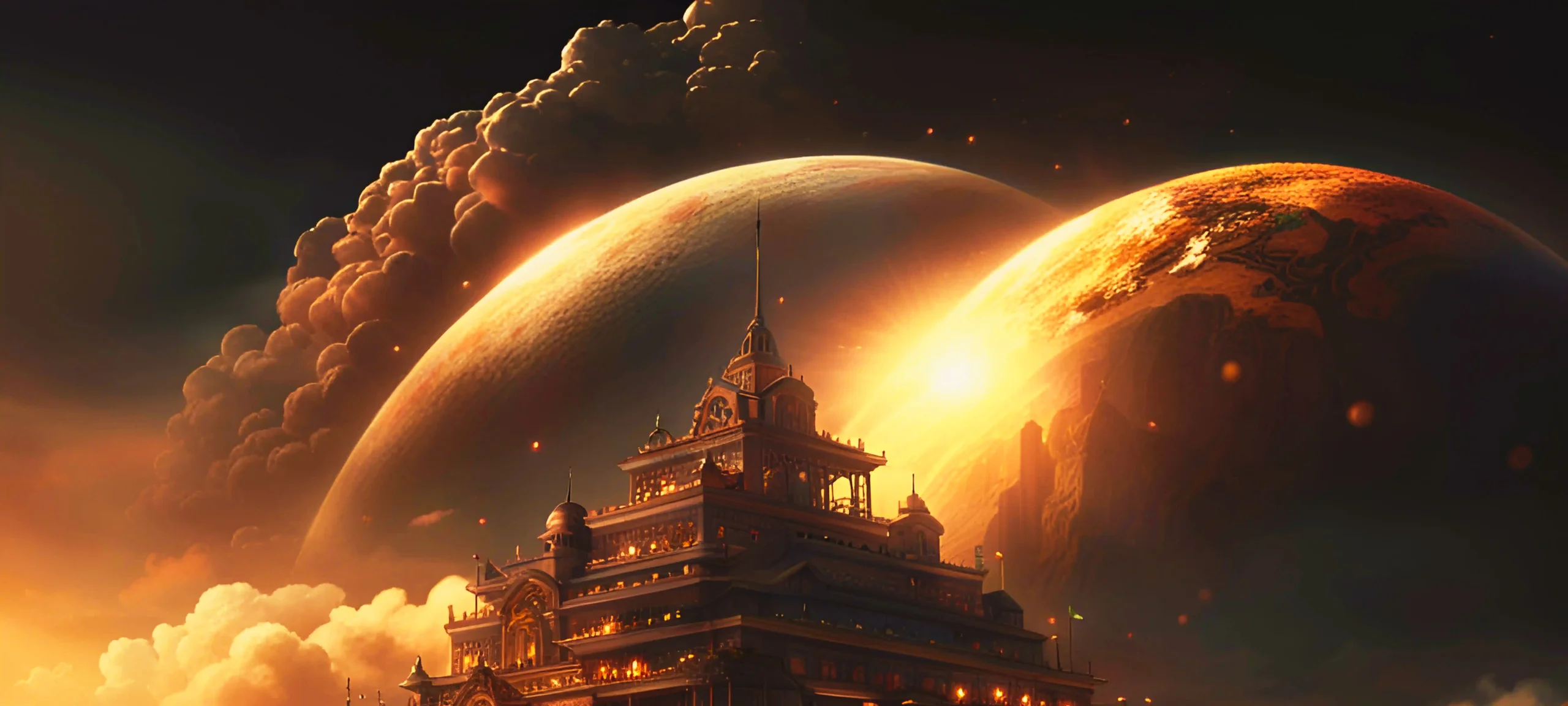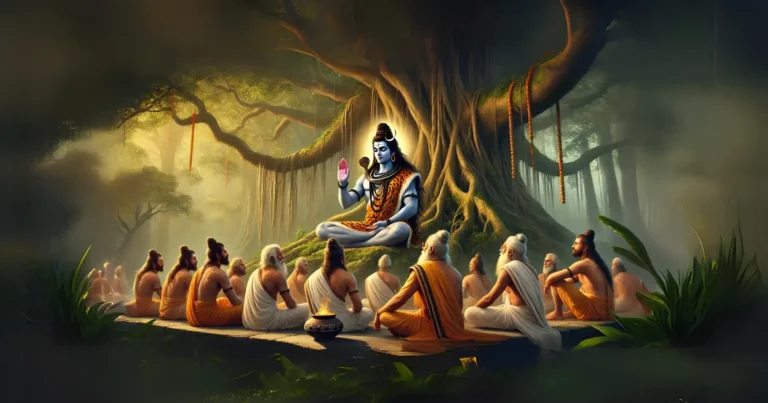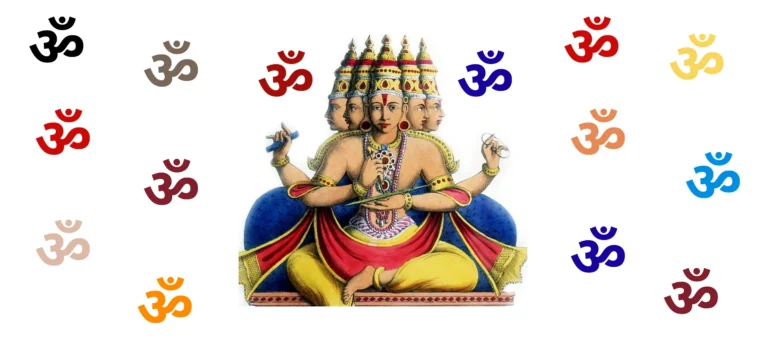Please Like the Blog and Share it for Maximum Reach
Table of Contents
The Three Schools of Sanatana Dharma
Moksha has been the primary subject of study in three main schools of Vedanta Philosophy. The three primary schools of Vedanta philosophy are Advaita, Vishishtha-Advaita and Dwaita.
Shankara qualifies as the chief promoter of Advaita philosophy. Sri Madhwa promoted the Dwaita philosophy while Sri Ramanujacharya promoted Vishishtha- Advaita. Advaita considers Moksha as the removal of ignorance (अविद्या Avidya).
What is Avidya?
Three representations of Brahman exist prior to the removal of Avidya. Brahman, the pure principle exists as Atman in its individualized representation. When one perceives a difference between Atman and Brahman, it is Avidya.
Moksha According to Adi Shankara
In the state of Moksha, Shankara argues that a liberated individual sees no difference between Atman and Brahman. In the state of Avidya, the philosophy of Advaita claims that Paramatma appears as the controlling principle, but in reality, the controller and the controller are one.
Connection between Paramatma and Brahman
Sri Shankara is of the opinion that this Paramatma is verily Brahman and Brahman is the very same Atman and appears to be three different entities owing to Avidya, namely Atman, Paramatma, and pure Brahman.
When Avidya fades away, Paramatma, Atman and Brahman, all mean the same entity or principle. The Advaita philosophy concludes that we perceive different things when in Avidya, and in our enlightened state we perceive the undivided, unsullied Brahman at all times.
What is the means to Moksha in Advaita?
When we realize Brahman, Advaita calls it Moksha or Liberation from duality.
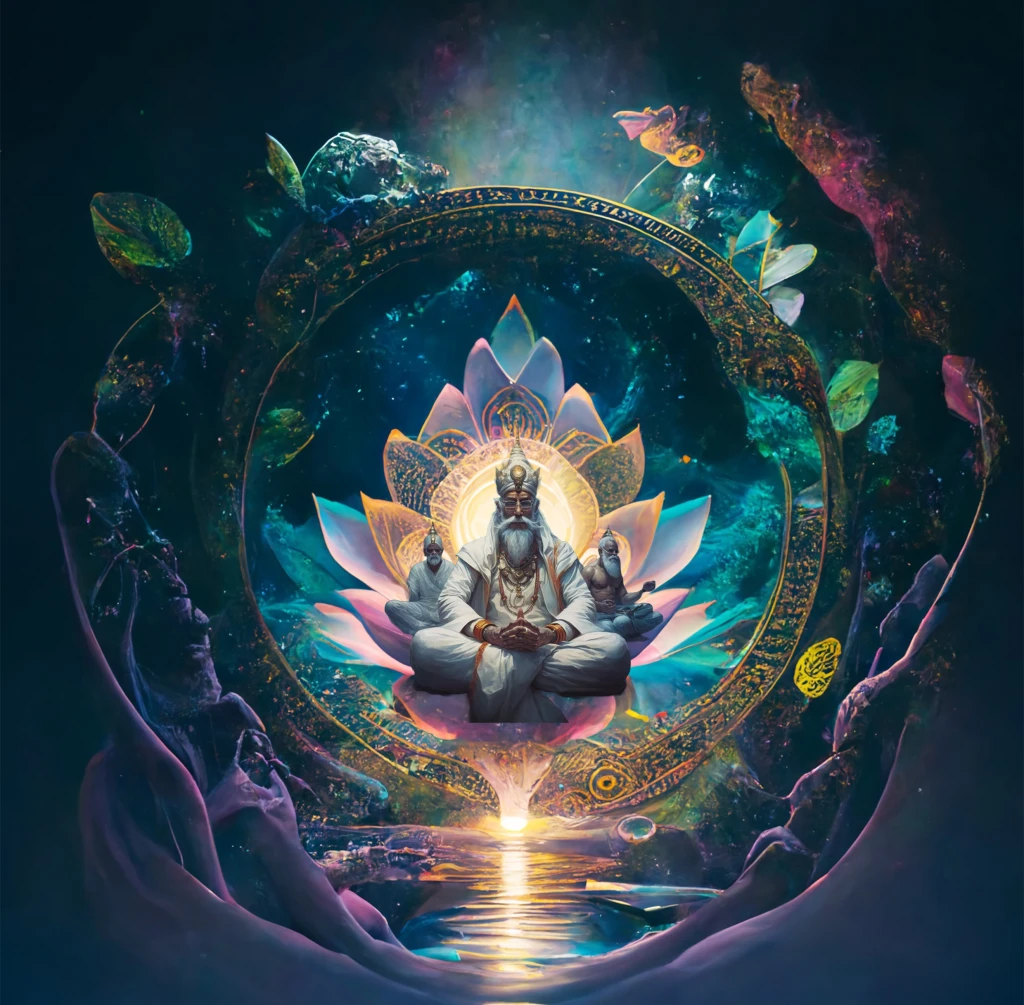
This is Oneness. Advaita further delineates the path of Jnana, deliberated self-inquiry, to attain Self-realization or Moksha.
What is Moksha according to Sri Madhwa’s Dwaita Philosophy?
According to the Dwaita School, attaining service to the Personality of Vishnu (Brahman) is Moksha. This is the highest state of existence.
The school argues that every being conceives Liberation differently. It exhorts that the Supreme Lord should be the sole object of one’s love and the center of all of one’s emotions.
Test your Alignment with the Spiritual Subject Matter (only 7 Questions)
The scores generated in this Quiz are relative. There are no right or wrong answers. A percentage towards 100 indicates that you are more aligned to the overall subject matter
What is the destination of Sri Vishnu Devotees?
A worshipper attains the Highest Abode of Sri Vishnu when He commits himself to the path of Bhakti Yoga or Sharanagati which also means Surrender. The practitioner of Bhakti attains liberation which is the same as attaining the Abodes of Sri Vishnu or one of His expansions such as Sri Rama or Sri Krishna.
One of His expansions. With such a practice the Bhakta or devotee attains the eternal service of Sri Vishnu.
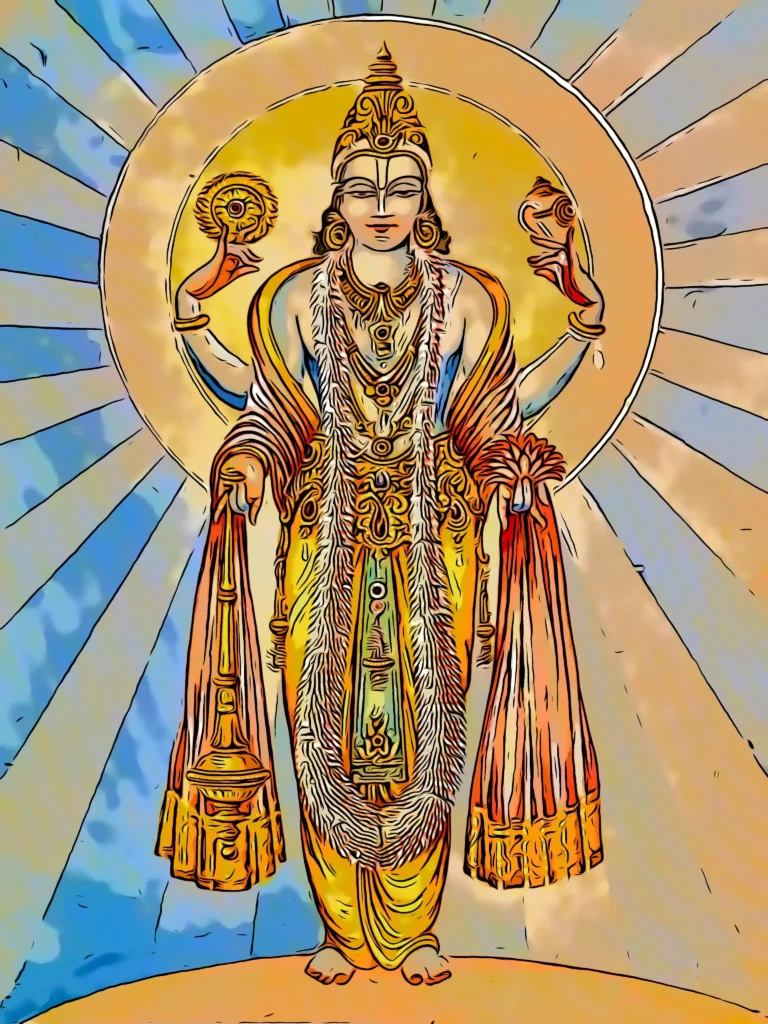
He considers this state of Liberation, a million times sweeter than what the practitioner of Advaita considers as Moksha. One shall never return in a bound condition ever to the earthly plane, on attaining the Abode of Sri Vishnu.
A devotee from the eternal abode of the Lord may return in a completely God-realized state in future incarnations, for the fulfillment of certain earthly pastimes of Sri Vishnu or some of His direct expansions like Lord Rama, Sri Krishna, and so on. Bhakti Yoga is the only means of salvation for a student in this school.
How does Sri Ramanuja view Moksha?

The Vishishta-Advaita school defines Avidya and Moksha differently as compared to its predecessor, the Advaita School. Sri Ramanujacharya, the pioneer of this school emphasizes that focusing on the body is futile.
He states that either torturing the body in the name of Austerities or becoming body-consciousness in order to enjoy the senses, both contribute towards Avidya or ignorance. When the focus is on Sri Vishnu, it is Vidya, while to have a focus on anything other than Vishnu is Avidya.
Why was Sri Ramanuja against the Advaita Schools?
Sri Ramanuja comes down heavily on the Advaita traditions where mortals claim themselves to be God, owing to the wrong understanding that prevails in the following of the Advaita school traditions.
This, Ramanuja claims is a very toxic trend that infects society in a debilitating manner and encourages blind faith. Dubious characters, dressed as Messiahs proliferate illusory theories in the guise of self-proclaimed Brahman-realized entities.
Godhood Decays into Cheap Materialism
Such ideas, claims Sri Ramanuja, decay into materialism, hedonism, and self-worship. Individuals forget Ishwara (God). Mukti, to the Vishishta-Advaita school, is release from such Avidya, towards intuition and eternal union with the Lord (Vishnu).
How is Moksha referred in the Upanishads?
In the Kathopanishad, Yama, the god of Death reveals that suffering and free-wheeling in Samsara happens due to living absent-mindedly and carrying on with the impious activity.
The purity of body, mind, and intentions is completely compromised.
He claims that Liberation or Moksha can result when there is self-examination when one is always on the lookout for purifying one’s thoughts, emotions, and intelligence, as prescribed in Shastra.
What is the route to Moksha?
It is only after prolonged and deliberate practice that the mind and the senses start taking instructions directly from the Inner light (Spirit). When the Spirit guides the mind, fully through faith and intuition, Moksha will result.
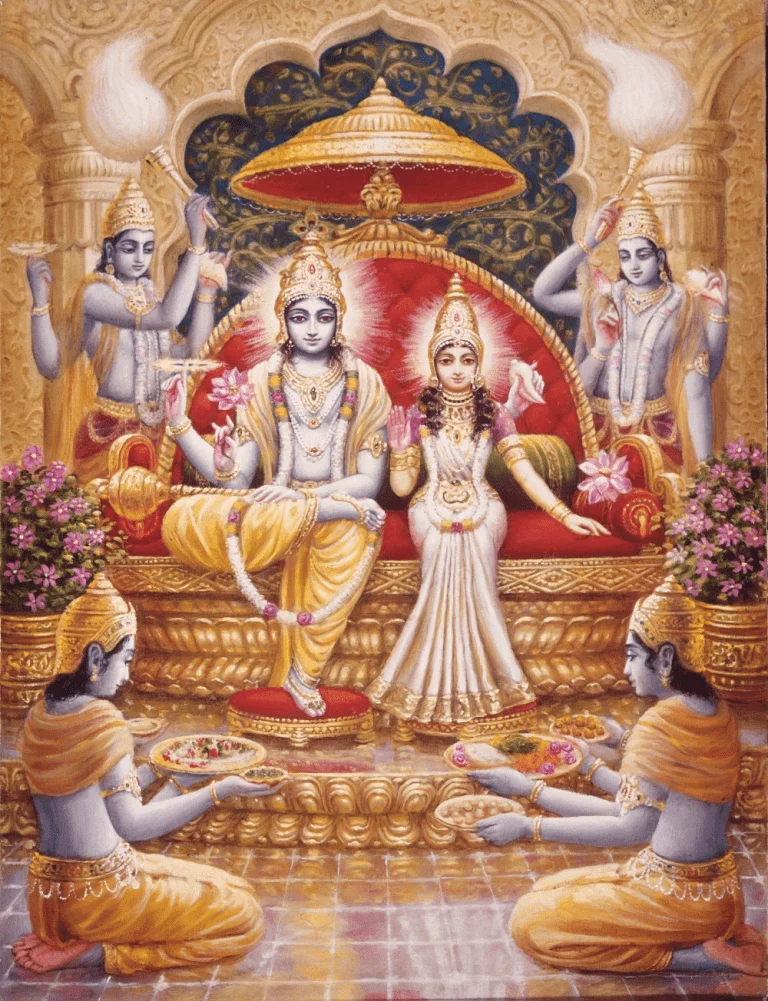
The Kataka Upanishad exhorts the role of Yoga in the process of Liberation and regards Jnana as the chief tool through which Yoga shall guide the individual.
Why can we recognize Ishwara directly?
The Svetasvatara Upanishad gives the example of a clarified butter hidden inside a potful of milk. It says that the Supreme Being, Ishwara is present in this world just as clarified butter is hidden within a potful of milk.
It is natural that no one shall be able to detect clarified butter in a potful of pure milk. Milk contains fat. When the milk is left undisturbed, a layer of fat begins floating as a layer over the milk.
It also sticks on the side of the pot. This fat layer when collected and churned and the water components of this fat layer removes easily because pure fat separates itself from the water.
When this fat is collected and heated up, it becomes clarified butter. This means that the butter was already inside the potful of milk and yet it was not visible. It became a reality when the milk underwent certain processes.
Developing Intuition and Insight
The settling of the milk is the process of calming our mind and senses. The heavy aspect of fat is when we observe that the world and living entities are being governed by a superior entity and yet that superior entity is not directly detectable.
When we use a churner to churn the semi-solid fat, it represents the various processes of Sadhana by which the Lord is being separated through intuition and insight, which is developed through intense sadhana, faith in the Ultimate Truth of Sri Vishnu, and on account of His unparalleled Grace.

Intuition and Insight develop, during the course of Sadhana. When these powers reveal themselves, the ability to discern God becomes evident. After heating butter we get clarified butter. Similarly, when spiritual wisdom fully matures through sadhana and everyday practice, we attain Grace.
Why can’t we perceive God easily?
This Grace is the ability to perceive the Lord in His majestic Glory. The wise men of Sanatana Dharma say “Other than the Lord, the world has no stuff”.
The wise Vedic men are only able to perceive the Lord. The average man cannot see the Lord. Why? It just means that we have not strived enough. We have not deliberated on the Lord enough because we lack faith and the grit to depend on Sadhana and Guru wholly.
So He remains distant. The moment we apply ourselves through Sadhana and obey the Scriptural injunctions, which are the direct words of the Lord, He shall become visible.
The Lord is more real than the World.
When Swami Vivekananda asked his preceptor, “Do you see God?” Sri Ramakrishna simply smiled and replied, “For me, the Lord is more real than you or the world.” This is the opinion of wise men of the Vedic lore.
Please Like the Blog and Share it for Maximum Reach

